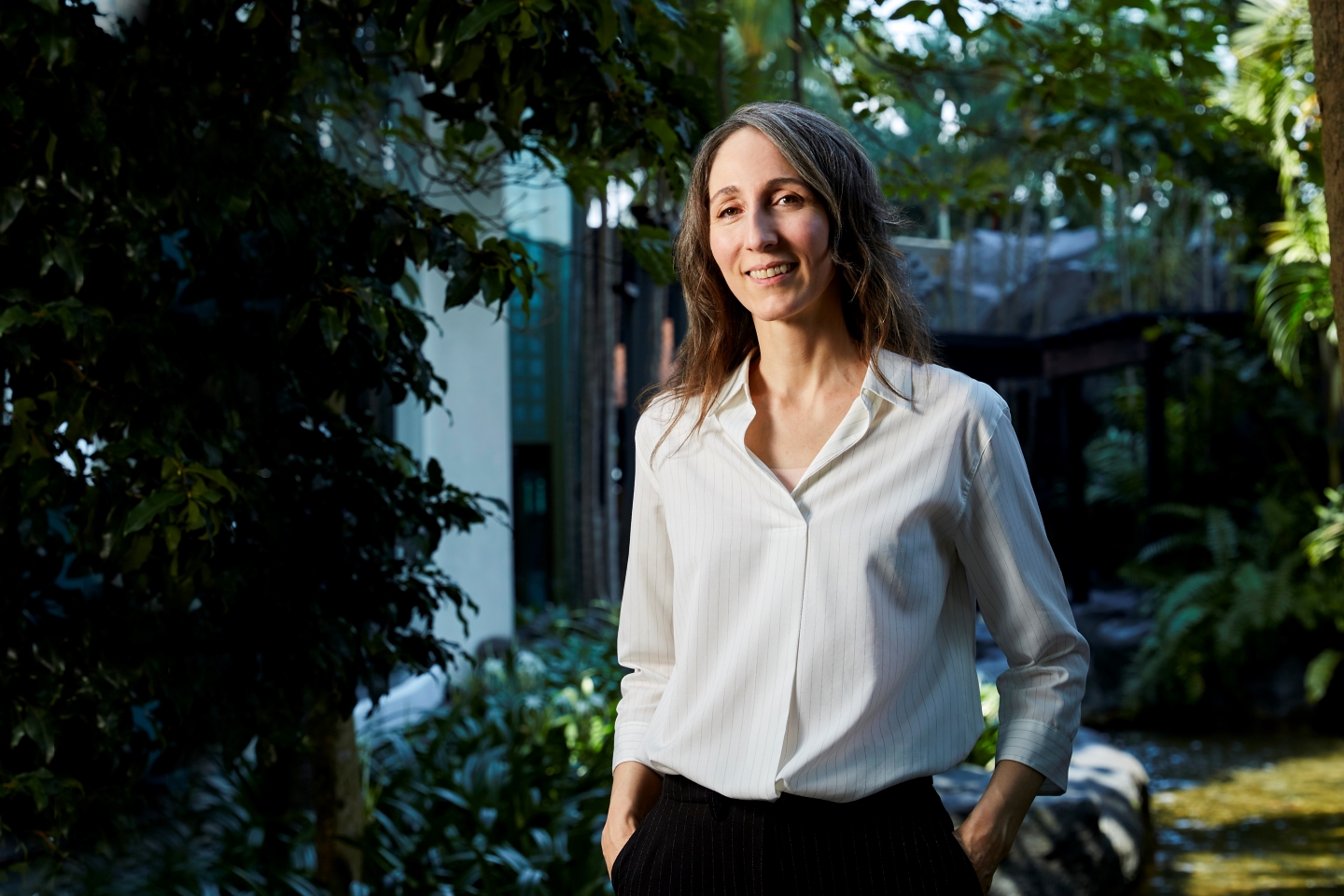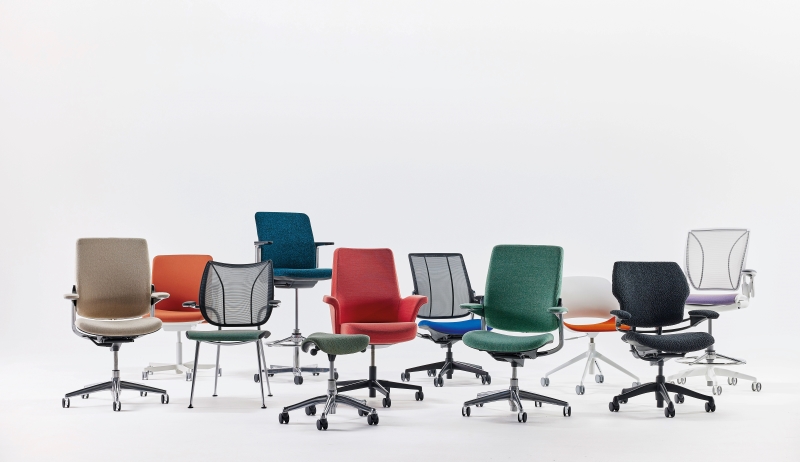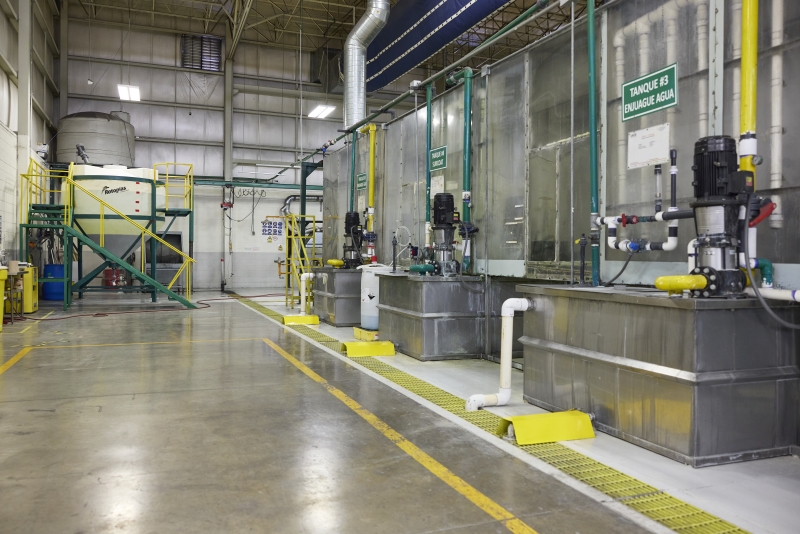
Abernethy: If we decide that it’s a losing battle, then it is. We are winning more than in the past (Photo: SooPhye)
Less can be more when it comes to making greener items. Also, if people were more content and bought better but less, half the problems surrounding eco-friendly production would be solved.
Jane Abernethy, chief sustainability officer of Humanscale, which designs and manufactures ergonomic furniture for the workplace, shared these thoughts on a recent visit to Kuala Lumpur. She had come for the CoreNet PAC Summit, themed “Zoom Out: The Power of Perspective”, which urges leaders to consider the nuances and systemic factors of our global challenges.
Companies that set out to reduce waste by half in, say, five years, do not cut it for Abernethy. It is a familiar goal and may be far better than the status quo. “Still, it doesn’t get us to the world we want to live in. It’s like going in the wrong direction, just less quickly.”
She spends a lot of time thinking about what it means to be sustainable as a manufacturer of durable goods. Looking around, what strikes her is that people are aiming to do less harm at some point in the future.
That, too, is no longer impressive because the goal has shifted to net zero and even net positive impact.
“So, our question to ourselves, which we’ve been trying to improve the answer to, is: ‘Can we manufacture and leave the world better off because we’re here, not in spite of us, and actually be part of the solution?’”
The answer may lie in looking at regeneration instead of focusing only on sustainability and increasing handprints, not just reducing footprints. As Humanscale CEO Bob King, who founded the company in 1983, says, “Less bad isn’t good enough”.
Canada-based and working remotely with the head office in New York, Abernethy met with designers and project managers in KL to talk about being sustainable and the importance of transparency when making that claim — otherwise, it would just be greenwashing. She joined Humanscale as a senior industrial designer in 2007 and assumed her current position five years later.
23-10-17-humanscale-family-shots-parlay_072_rt2.jpg

Carbon footprint versus sustainability can be either despairing news or good. “If we decide that it’s a losing battle, then it is. We are winning more than in the past,” she says, adding that the company is trying to turn the tide against ocean plastic.
For hundreds of years, generations of fishermen have dumped discarded nets into the sea. Made of fibres such as hemp, they were cut free and cast into the water, where they biodegraded and were eaten up by fish.
Then, 40 to 50 years ago, people started making nylon nets, which lasted longer but still suffered wear and tear. When these are abandoned in the ocean, they continue to trap everything in their path, leading to “ghost fishing”.
Huge nets are some of the worst kinds of ocean plastic because they will ghost fish for maybe hundreds of years, Abernethy says. Also, they are prevalent because fishing communities are often very remote, with hardly any recycling facilities and fishermen have no alternative but to discard nets that are worn and torn.
A World Wildlife Fund report says that besides fish, “ghost gear” entangles sea turtles, dolphins, porpoises, birds, sharks, seals and more. Marine creatures swim into them and are trapped, leading to suffocation or injury. The discards break corals as well, exposing them to disease and even blocking reefs from needed sunlight. According to conservationists, fishing nets make up almost half of the world’s plastic ocean pollution.
In 2016, Humanscale began working with Bureo, which engages fishing communities to gather end-of-life nets. These are hauled back, sorted, cleaned, shredded and packed before being sent to recycling partners. Using an advanced depolymerisation process, they are ground down and turned into pellets that find new uses.
Through injection moulding, Humanscale incorporates the pellets into chair parts, such as the back frame for the mesh. One interesting result is the Smart Ocean, its first ergonomic task chair made with recycled fishing nets, introduced in 2018. Each unit uses almost two pounds of plastic fishing nets sourced through Bureo’s Net Positiva recycling programme.
fisherman.jpg

Bureo supports 10 collection hubs across nine countries, including Chile, Panama, Argentina, Mexico, the US and Japan, working with more than 25 brands to reduce ocean plastic production and empower fishing communities in the process.
The California recycling company’s NetPlus materials are being turned into shorts, spectacle frames, hat brims and surf fins, among other things. They are also traceable, from original source to recycling, so, brands know their products contain 100% post-consumer nets.
Transparency is key and Humanscale has taken the lead in labelling what is in its furniture, much like nutritional tags for food items. There was pushback from other manufacturers, saying it was too complicated, but it went ahead anyway. Last year, 83% of its products were labelled.
Abernethy, who has always loved drawing, art and maths, says these disciplines come together in design. Her journey into sustainability began when she was asked to handle a project. She was not keen on production because it could mean being part of the sustainability problem. “So, I said, ‘Okay, I’m not interested in just doing the budget. But if I can change how the company operates, I’ll take that on.’”
She has, and done well to boot, leading the company’s efforts to develop planet-positive products using healthy materials that do good. Going down to the basics, understanding why she is designing a product, is more important than adding new features. As she often tells it, “Nobody wants a toaster; they just want toast. Good design achieves more with less.”
Mindful of The Red List, which spells out toxic chemical contaminants that pollute the environment and are harmful to health, her team strives to create products free of these and revisit older items to see where they can improve.
From waste-cutting measures at the brand’s New Jersey main production facility, which taps solar energy and captures rainwater, to using “new” materials, Humanscale’s company’s efforts have not gone unnoticed. It has received more than 200 global design prizes and is the first-ever company to have not only one but 29 climate positive products, which account for 75% of sales. The items are audited and validated by the International Living Future Institute under its Living Product Challenge.
24-01-29-humanscale-nogales_0210.jpg

Abernethy is a recipient of the Women in Sustainability Leadership Award, established to identify, advance and celebrate those working in that field. After launching the first Smart Ocean chair, she shared its story with other manufacturers. A few began looking in the same direction and came up with furniture with plastic sourced from the sea. One even used its tagline, From Ocean to Office.
“We were like, ‘Oh, clearly there’s some inspiration.’ To me, that was really exciting because, very unfortunately, we’re not going to run out of plastic in the ocean to make chairs like that. So, the more folks you can get on board to do it, the better,” she says.
Pushing the boundaries of sustainability and finding out what is possible, then sharing findings with fellow producers and clients, can help scale up the industry.
There is still a lot of work to do if you want to be smart, she thinks. A good place to start is by asking. “When you ask to know the information, manufacturers will want to put their best foot forward. And whatever changes they can make get made.”
Consumers are at a leverage point because people in the industry are paying attention. When they take action and begin to produce in large volumes, repeatedly, it leads to changes in the supply chain.
“So, just your asking is actually very powerful,” Abernethy says.
Pulling nets out of the ocean and removing any other kind of plastic caught in them is, in a small way, cleaning up the ocean. Similarly, if a producer reduces plastic use in a bottle cap by one per cent, it does not stop there. Manufacturers roll out hundreds of thousands of bottles daily. Multiply that by a year and the figure can be staggering. “We can make decisions that influence outcomes,” she believes.
As for those still doubtful about stemming the tide and making a sea change, she points to Roger Bannister, lauded by Harvard Business Review as “an innovator, an agent of change”. Everyone around him said it was impossible to run a mile in under four minutes because gravity and human physiology were insurmountable hurdles. But the Briton, aged 25, defied both on a cold, wet day in Oxford on May 6, 1954, becoming the first man to do so, breasting the tape at three minutes, fifty-nine and four-tenths of a second.
In no time, other athletes were attempting the same feat, determined because it is possible. Today, two-time Moroccan Olympic medalist Hicham El Guerrouj holds the world record for the fastest mile — 3:43.13 — clocked in Rome on July 7, 1999.
This article first appeared on June 24, 2024 in The Edge Malaysia.


